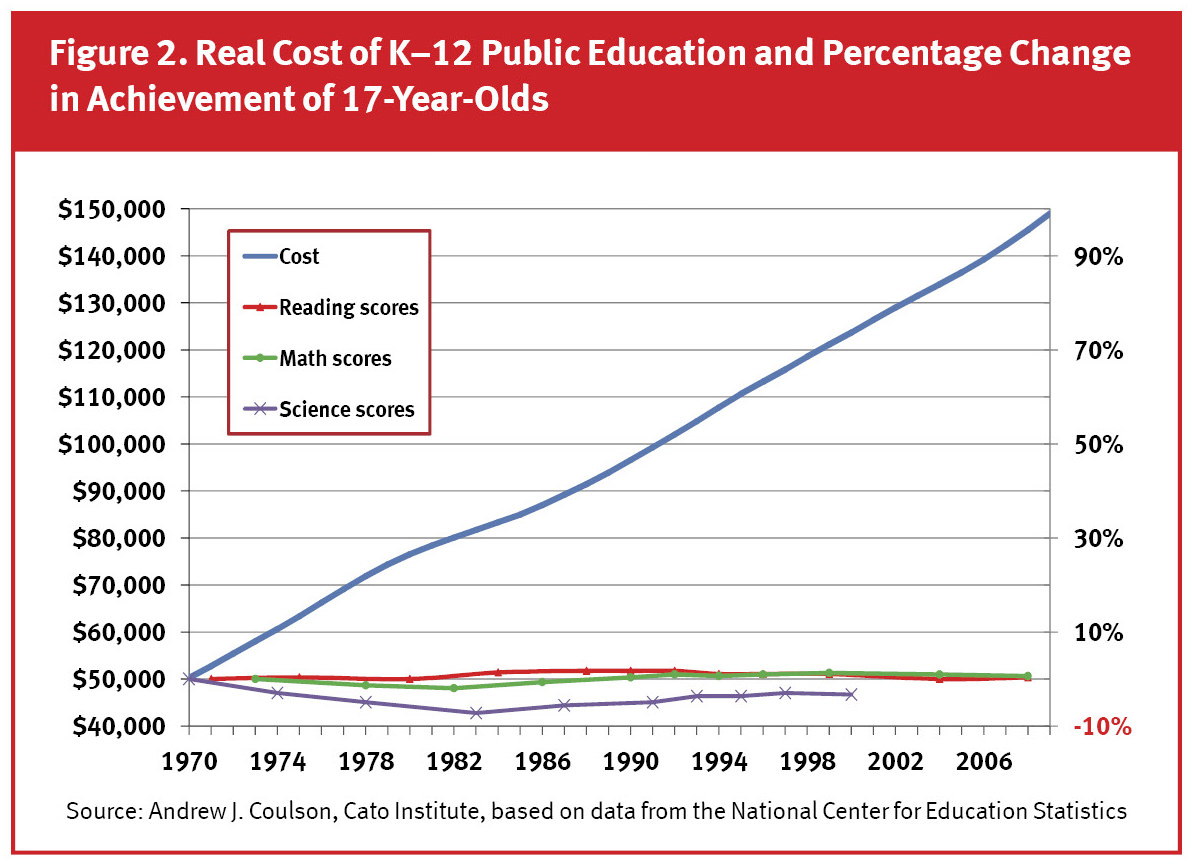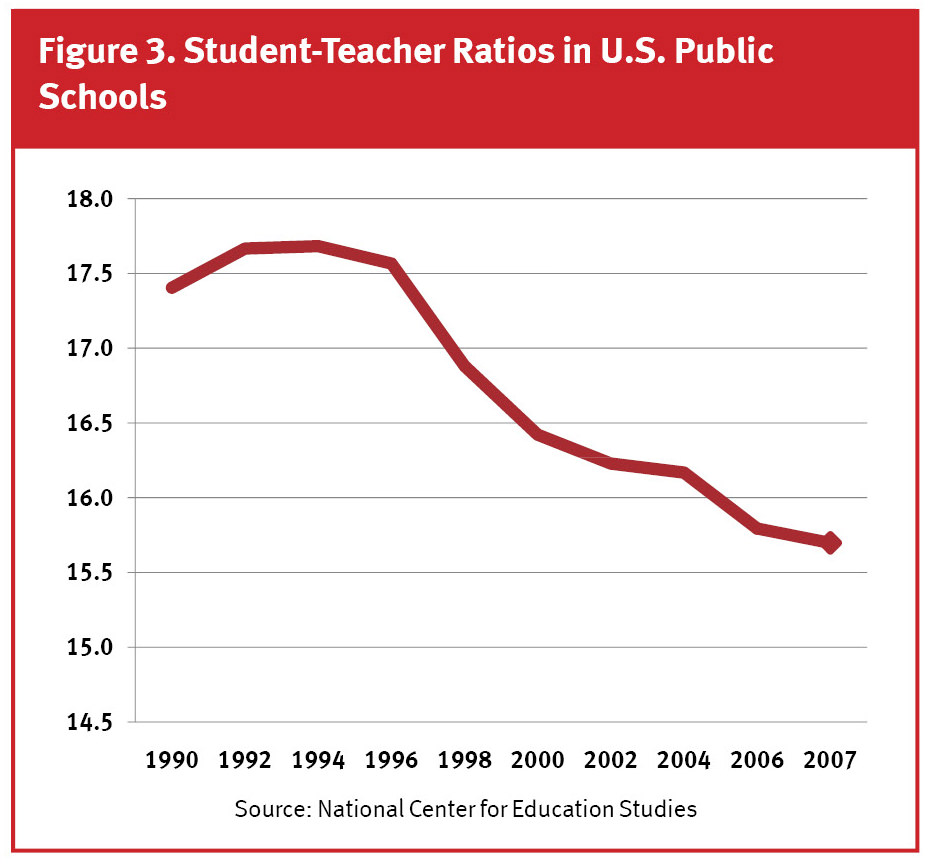Another misguided call for more K-12 spending
Las Cruces teacher Bill Soules writes in the Sun-News that if we spent more money on education, we’d have better schools. Haven’t we explained this canard before?
Here is a chart of US spending on education as compared with actual education results:

Here is a chart of students per teacher:
As this paper notes, New Mexico’s experience is not out of line with those elsewhere.
The problem is clearly not a lack of spending, the problem is instead one of incentives and the fact that spending more money doesn’t necessarily result in the hiring of better teachers and overall improvements in educational output.

